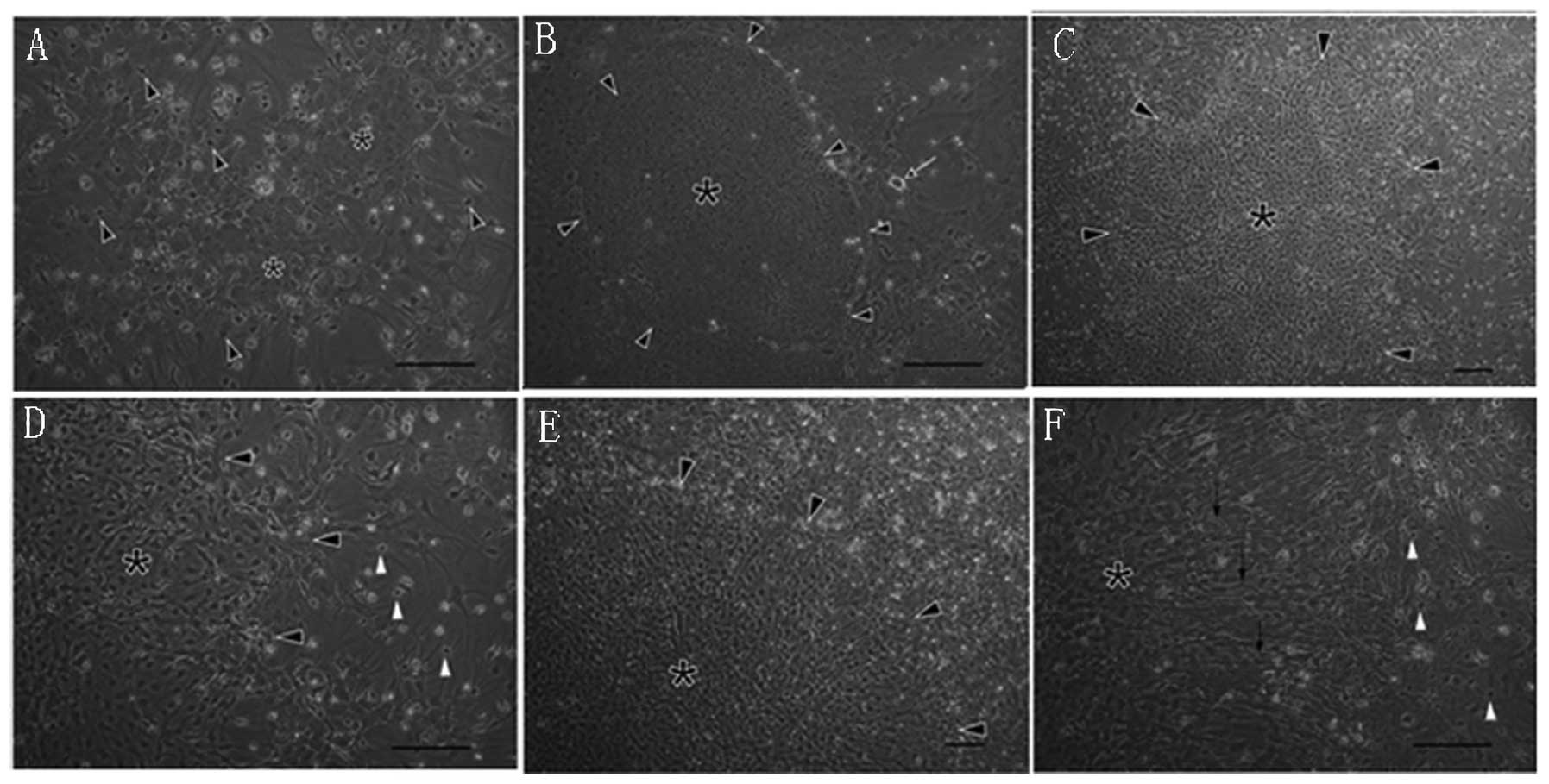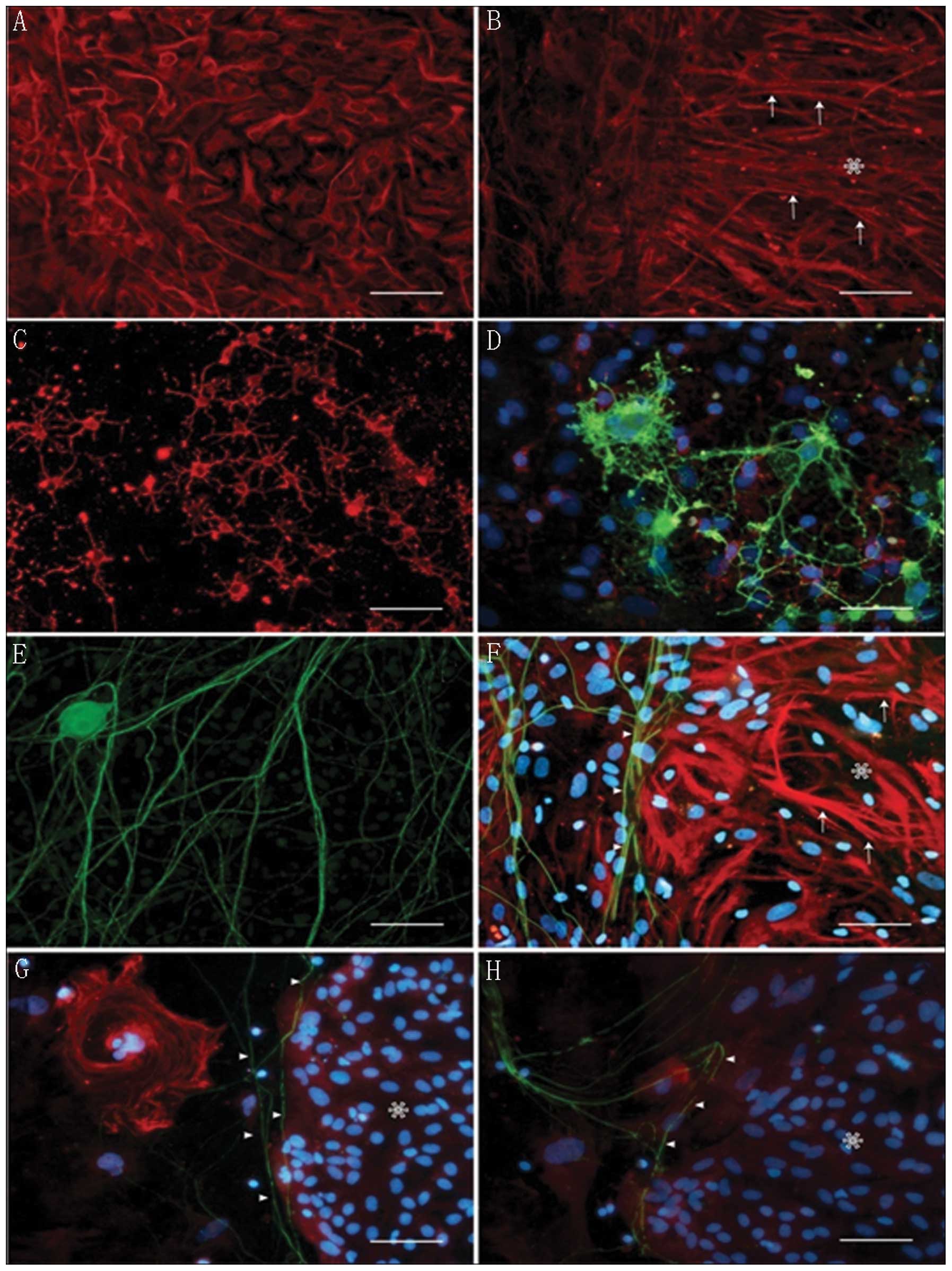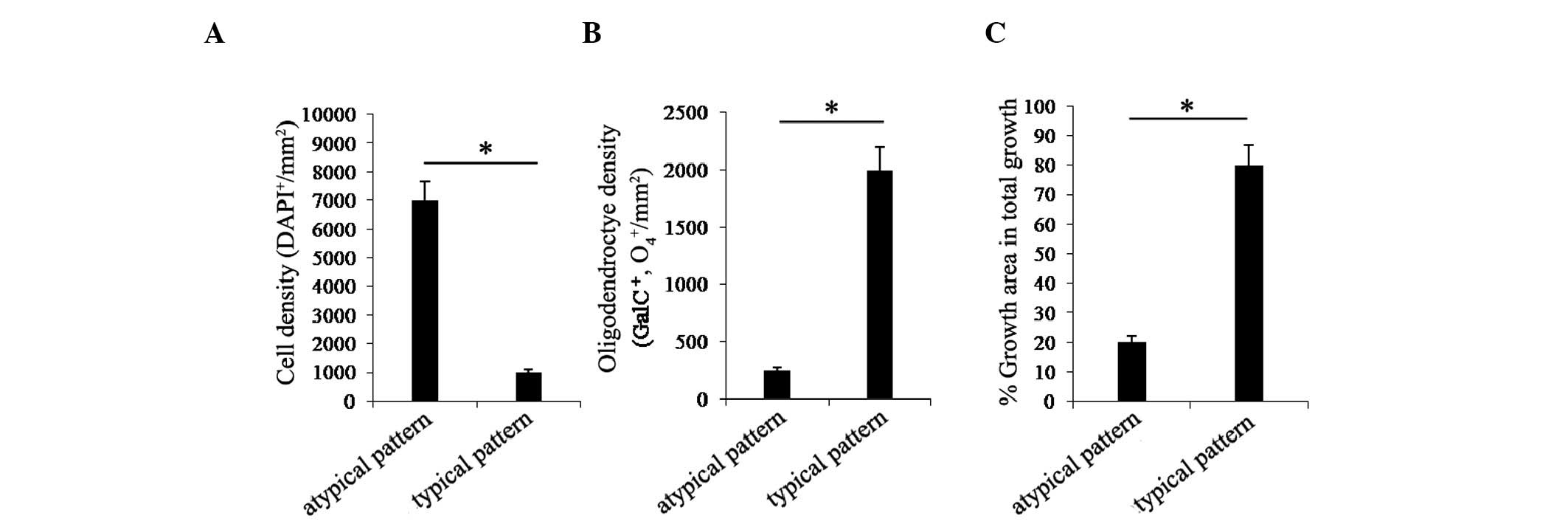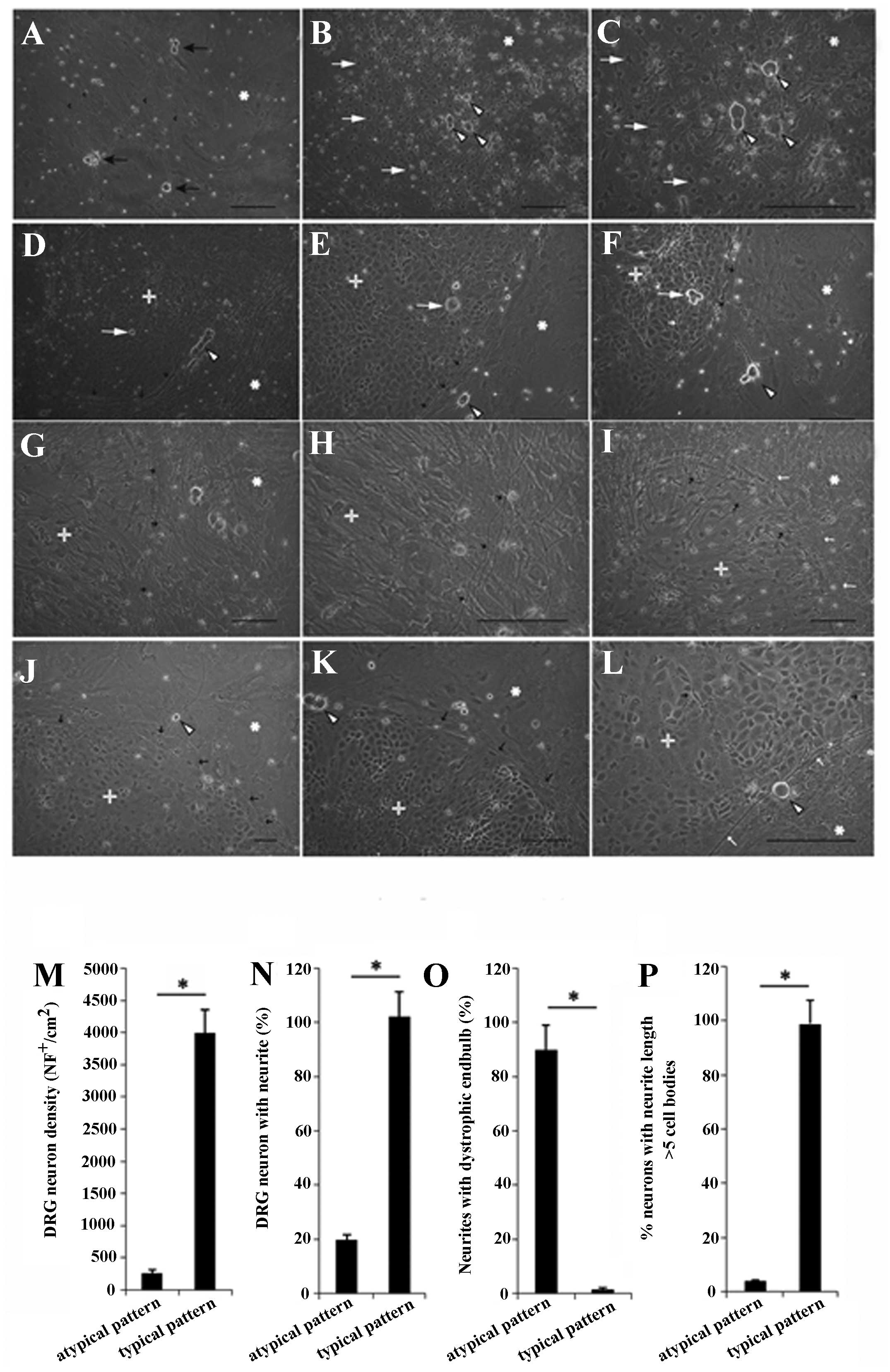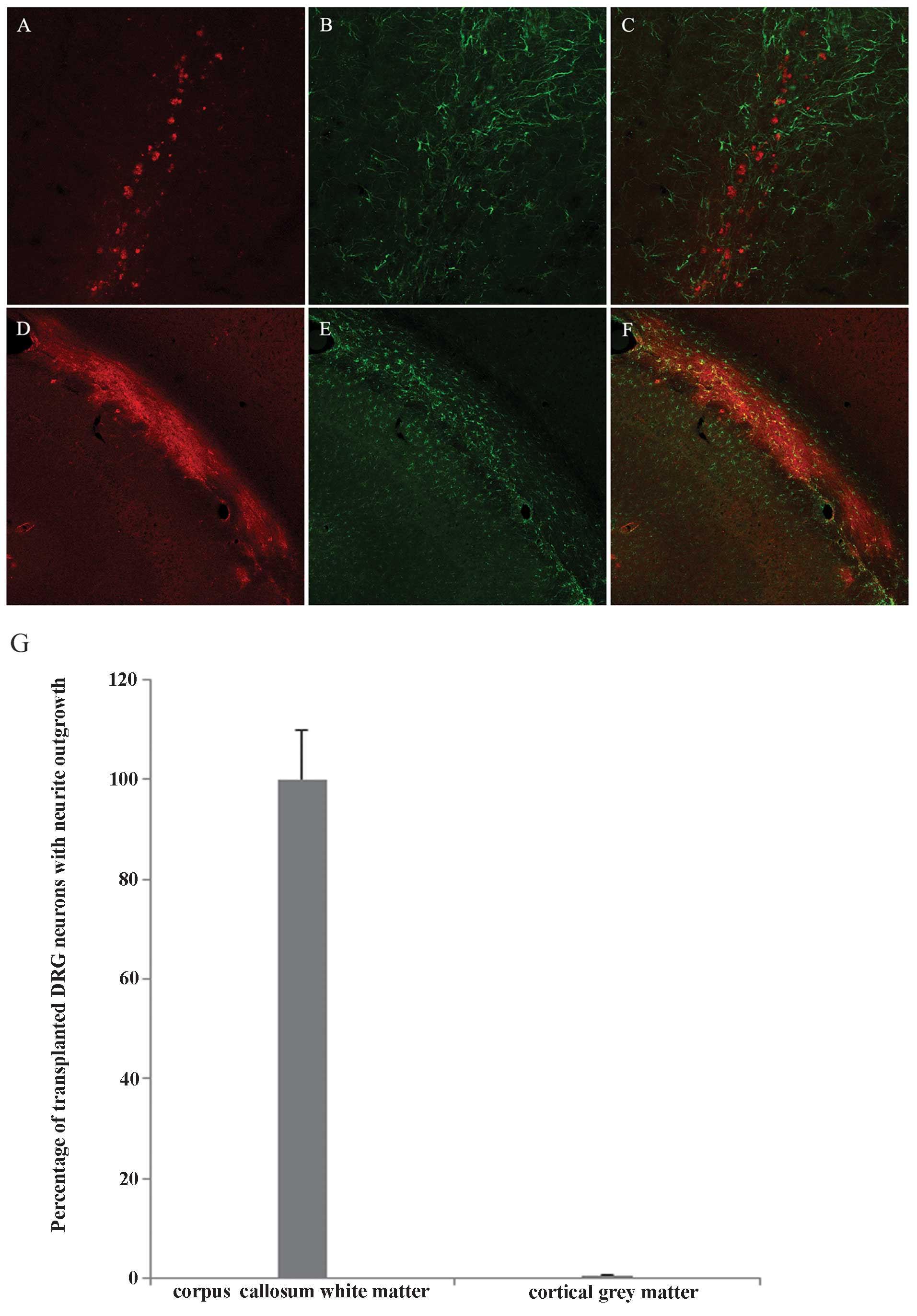|
1
|
Barres BA: The mystery and magic of glia:
A perspective on their roles in health and disease. Neuron.
60:430–440. 2008. View Article : Google Scholar : PubMed/NCBI
|
|
2
|
Allen NJ and Barres BA: Neuroscience: Glia
- more than just brain glue. Nature. 457:675–677. 2009. View Article : Google Scholar : PubMed/NCBI
|
|
3
|
Kimelberg HK: Functions of mature
mammalian astrocytes: A current view. Neuroscientist. 16:79–106.
2010. View Article : Google Scholar : PubMed/NCBI
|
|
4
|
Kettenmann H and Ransom BR: The concept of
neuroglia: a historical perpspective. Neuroglia. 2nd edition.
Oxford University Press; New York: pp. 1–9. 2005
|
|
5
|
Raff MC, Abney ER, Cohen J, Lindsay R and
Noble M: Two types of astrocytes in cultures of developing rat
white matter: Differences in morphology, surface gangliosides and
growth characteristics. J Neurosci. 3:1289–1300. 1983.PubMed/NCBI
|
|
6
|
Yong VW, Yong FP, Olivier A, Robitaille Y
and Antel JP: Morphologic heterogeneity of human adult astrocytes
in culture: Correlation with HLA-DR expression. J Neurosci Res.
27:678–688. 1990. View Article : Google Scholar : PubMed/NCBI
|
|
7
|
Bailey MS and Shipley MT: Astrocyte
subtypes in the rat olfactory bulb: morphological heterogeneity and
differential laminar distribution. J Comp Neurol. 328:501–526.
1993. View Article : Google Scholar : PubMed/NCBI
|
|
8
|
Cahoy JD, Emery B, Kaushal A, et al: A
transcriptome database for astrocytes, neurons and
oligodendrocytes: A new resource for understanding brain
development and function. J Neurosci. 28:264–278. 2008. View Article : Google Scholar : PubMed/NCBI
|
|
9
|
Doyle JP, Dougherty JD, Heiman M, et al:
Application of a translational profiling approach for the
comparative analysis of CNS cell types. Cell. 135:749–762. 2008.
View Article : Google Scholar : PubMed/NCBI
|
|
10
|
Ståhlberg A, Andersson D, Aurelius J, et
al: Defining cell populations with single-cell gene expression
profiling: Correlations and identification of astrocyte
subpopulations. Nucleic Acids Res. 39:e242011. View Article : Google Scholar :
|
|
11
|
Yeh TH, Lee da Y, Gianino SM and Gutmann
DH: Microarray analyses reveal regional astrocyte heterogeneity
with implications for neurofibromatosis type 1 (NF1-)regulated
glial proliferation. Glia. 57:1239–1249. 2009. View Article : Google Scholar : PubMed/NCBI
|
|
12
|
Zhang Y and Barres BA: Astrocyte
heterogeneity: An underappreciated topic in neurobiology. Curr Opin
Neurobiol. 20:588–594. 2010. View Article : Google Scholar : PubMed/NCBI
|
|
13
|
Wilkin GP, Marriott DR and Cholewinski AJ:
Astrocyte heterogeneity. Trends Neurosci. 13:43–46. 1990.
View Article : Google Scholar : PubMed/NCBI
|
|
14
|
Neumann S and Woolf CJ: Regeneration of
dorsal column fibers into and beyond the lesion site following
adult spinal cord injury. Neuron. 23:83–91. 1999. View Article : Google Scholar : PubMed/NCBI
|
|
15
|
Goldberg JL, Klassen MP, Hua Y and Barres
BA: Amacrine-signaled loss of intrinsic axon growth ability by
retinal ganglion cells. Science. 296:1860–1864. 2002. View Article : Google Scholar : PubMed/NCBI
|
|
16
|
Yiu G and He Z: Glial inhibition of CNS
axon regeneration. Nat Rev Neurosci. 7:617–627. 2006. View Article : Google Scholar : PubMed/NCBI
|
|
17
|
Chaudhry N and Filbin MT:
Myelin-associated inhibitory signaling and strategies to overcome
inhibition. J Cereb Blood Flow Metab. 27:1096–1107. 2007.
View Article : Google Scholar
|
|
18
|
Busch SA and Silver J: The role of
extracellular matrix in CNS regeneration. Curr Opin Neurobiol.
17:120–127. 2007. View Article : Google Scholar : PubMed/NCBI
|
|
19
|
Verma P, Garcia-Alias G and Fawcett JW:
Spinal cord repair: bridging the divide. Neurorehabil Neural
Repair. 22:429–437. 2008. View Article : Google Scholar : PubMed/NCBI
|
|
20
|
Silver J and Miller JH: Regeneration
beyond the glial scar. Nat Rev Neurosci. 5:146–156. 2004.
View Article : Google Scholar : PubMed/NCBI
|
|
21
|
Wanner IB, Deik A, Torres M, et al: A new
in vitro model of the glial scar inhibits axon growth. Glia.
56:1691–1709. 2008. View Article : Google Scholar : PubMed/NCBI
|
|
22
|
Ard MD, Bunge MB, Wood PM, Schachner M and
Bunge RP: Retinal neurite growth on astrocytes is not modified by
extracellular matrix, anti-L1 antibody, or oligodendrocytes. Glia.
4:70–82. 1991. View Article : Google Scholar : PubMed/NCBI
|
|
23
|
Fawcett JW, Fersht N, Housden L, Schachner
M and Pesheva P: Axonal growth on astrocytes is not inhibited by
oligodendrocytes. J Cell Sci. 103:571–579. 1992.PubMed/NCBI
|
|
24
|
McCarthy KD and de Vellis J: Preparation
of separate astroglial and oligodendroglial cell cultures from rat
cerebral tissue. J Cell Biol. 85:890–902. 1980. View Article : Google Scholar : PubMed/NCBI
|
|
25
|
Liu R, Lin G and Xu H: An efficient method
for dorsal root ganglia neurons purification with a one-time
anti-mitotic reagent treatment. PLoS One. 8:e605582013. View Article : Google Scholar : PubMed/NCBI
|
|
26
|
Paxinos G and Watson C: The Rat Brain in
Stereotaxic Coordinates. 6th. Academic Press; London: 2007
|
|
27
|
Biran R, Noble MD and Tresco PA: Directed
nerve outgrowth is enhanced by engineered glial substrates. Exp
Neurol. 184:141–152. 2003. View Article : Google Scholar : PubMed/NCBI
|
|
28
|
Seifert G, Schilling K and Steinhäuser C:
Astrocyte dysfunction in neurological disorders: a molecular
perspective. Nat Rev Neurosci. 7:194–206. 2006. View Article : Google Scholar : PubMed/NCBI
|
|
29
|
Shen Q, Wang Y, Kokovay E, et al: Adult
SVZ stem cells lie in a vascular niche: a quantitative analysis of
niche cell-cell interactions. Cell Stem Cell. 3:289–300. 2008.
View Article : Google Scholar : PubMed/NCBI
|
|
30
|
Jhaveri S: Midline glia of the tectum: a
barrier for developing retinal axons. Perspect Dev Neurobiol.
1:237–243. 1993.PubMed/NCBI
|
|
31
|
Wu DY, Schneider GE, Silver J, Poston M
and Jhaveri S: A role for tectal midline glia in the unilateral
containment of retinocollicular axons. J Neurosci. 18:8344–8355.
1998.PubMed/NCBI
|
|
32
|
Steindler DA: Glial boundaries in the
developing nervous system. Ann Rev Neurosci. 16:445–470. 1993.
View Article : Google Scholar : PubMed/NCBI
|
|
33
|
McKeon RJ, Schreiber R, Rudge J and Silver
J: Reduction of neurite outgrowth in a model of glial scarring
following CNS injury is correlated with the expression of
inhibitory molecules on reactive astrocytes. J Neurosci.
11:3398–3411. 1991.PubMed/NCBI
|
|
34
|
McKeon RJ, Jurynec MJ and Buck CR: The
chondroitin sulfate proteoglycans neurocan and phosphacan are
expressed by reactive astrocytes in the chronic CNS glial scar. J
Neurosci. 19:10778–10788. 1999.PubMed/NCBI
|
|
35
|
Grierson JP, Petroski RE, Ling DS and
Geller HM: Astrocyte topography and tenascin/cytotactin expression:
correlation with the ability to support neuritic outgrowth. Brain
Res Dev Brain Res. 55:11–19. 1990. View Article : Google Scholar : PubMed/NCBI
|
|
36
|
Fok-Seang J, Smith-Thomas LC, Meiners S,
et al: An analysis of astrocytic cell lines with different
abilities to promote axon growth. Brain Res. 689:207–223. 1995.
View Article : Google Scholar : PubMed/NCBI
|
|
37
|
Meiners S, Powell EM and Geller H: A
distinct subset of tenascin/CS-6-PG-rich astrocytes restricts
neuronal growth in vitro. J Neurosci. 15:8096–8108. 1995.PubMed/NCBI
|
|
38
|
Ard MD and Bunge RP: Heparan sulfate
proteoglycan and laminin immunoreactivity on cultured astrocytes:
relationship to differentiation and neurite growth. J Neurosci.
8:2844–2858. 1988.PubMed/NCBI
|
|
39
|
Powell EM, Meiners S, DiProspero NA and
Geller HM: Mechanisms of astrocyte-directed neurite guidance. Cell
Tissue Res. 290:385–393. 1997. View Article : Google Scholar : PubMed/NCBI
|
|
40
|
Xu XY, Li XT, Peng SW, et al: The
behaviour of neural stem cells on polyhydroxyalkanoate nanofiber
scaffolds. Biomaterials. 31:3967–3975. 2010. View Article : Google Scholar : PubMed/NCBI
|
|
41
|
Plant GW, Currier PF, Cuervo EP, et al:
Purified adult ensheathing glia fail to myelinate axons under
culture conditions that enable Schwann cells to form myelin. J
Neurosci. 22:6083–6091. 2002.PubMed/NCBI
|
|
42
|
Zwain IH and Yen SS: Neurosteroidogenesis
in astrocytes, oligodendrocytes, and neurons of cerebral cortex of
rat brain. Endocrinology. 140:3843–3852. 1999. View Article : Google Scholar : PubMed/NCBI
|
|
43
|
Tien AC, Tsai HH, Molofsky AV, et al:
Regulated temporal-spatial astrocyte precursor cell proliferation
involves BRAF signalling in mammalian spinal cord. Development.
139:2477–2487. 2012. View Article : Google Scholar : PubMed/NCBI
|
|
44
|
Ard MD, Schachner M, Rapp JT and Faissner
A: Growth and degeneration of axons on astrocyte surfaces: effects
on extracellular matrix and on later axonal growth. Glia.
9:248–259. 1993. View Article : Google Scholar : PubMed/NCBI
|
|
45
|
Siddiqui S, Horvat Broecker A and Faissner
A: Comparative screening of glial cell types reveals extracellular
matrix that inhibits retinal axon growth in a chondroitinase
ABC-resistant fashion. Glia. 57:1420–1438. 2009. View Article : Google Scholar : PubMed/NCBI
|



